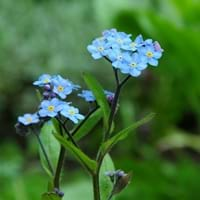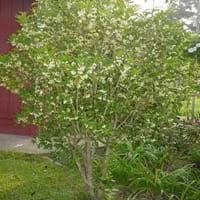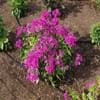Life Span
Annual and Perennial
Perennial
Type
Flowering Plants, Shrubs
Broadleaf Evergreen
Origin
Eastern Asia
Asia, Nepal, China, Japan, Korea
Types
Bigleaf hydrangea, Hortensia, Smooth hydrangea, Oakleaf hydrangea, Annabelle
Apricot Gold, Butter Yellow, Orange Supreme, Dan
Number of Varieties
Not Available
Habitat
Fields, gardens, meadows, rocky outcrops, waste ground, yards
Dappled Shade, Woodland Garden Canopy
USDA Hardiness Zone
Not Available
6-11
AHS Heat Zone
8 - 1
12 - 8
Habit
Clump-Forming
Upright/Erect
Flower Color
Blue, White
White, Orange
Flower Color Modifier
Bicolor
Bicolor
Fruit Color
Not Available
Blue, Black
Leaf Color in Spring
Green, Gray Green
Green, Dark Green
Leaf Color in Summer
Green, Gray Green
Dark Green
Leaf Color in Fall
Green, Gray Green
Dark Green
Leaf Color in Winter
Light Green
Dark Green
Leaf Shape
Lanceolate
Oval, Finely Dentate
Plant Season
Spring, Summer
Spring, Summer, Fall, Winter
Sunlight
Full Sun, Partial Sun
Full Sun, Partial Sun, Partial shade
Type of Soil
Loam
Clay, Loam, Sand
The pH of Soil
Acidic, Neutral
Acidic, Neutral
Soil Drainage
Well drained
Well drained
Bloom Time
Early Spring, Spring, Late Spring, Early Summer, Summer, Late Summer
Spring, Late Spring, Early Fall, Fall
Tolerances
Not Available
Not Available
Where to Plant?
Ground
Container, Ground, Pot
How to Plant?
Divison, Seedlings
Semi-hardwood cuttings
Plant Maintenance
Medium
Medium
Watering Requirements
Do Not over Water
Average Water Needs
In Summer
Lots of watering
Lots of watering
In Spring
Moderate
Moderate
In Winter
Average Water
Average Water
Soil pH
Acidic, Neutral
Acidic, Neutral
Soil Type
Loam
Clay, Loam, Sand
Soil Drainage Capacity
Well drained
Well drained
Sun Exposure
Full Sun, Partial Sun
Full Sun, Partial Sun, Partial shade
Pruning
Remove damaged leaves, Remove dead branches, Remove dead leaves
Remove no more than one-third of each branch
Fertilizers
All-Purpose Liquid Fertilizer
All-purpose dry fertilizer
Pests and Diseases
Red blotch
No serious insect or disease problems
Plant Tolerance
Drought
Drought
Flower Petal Number
Single
Single
Foliage Texture
Medium
Medium
Foliage Sheen
Matte
Glossy
Attracts
Bees, Flies
Nematodes
Allergy
Chest tightness, Diarrhea, Dizziness, Nausea, Vomiting
no allergic reactions
Aesthetic Uses
Beautification, Cottage Garden, Ground Cover, Showy Purposes
Beautification, Showy Purposes
Beauty Benefits
Not Available
Good for skin and hair
Environmental Uses
Air purification
Air purification
Medicinal Uses
Fever, Kidney problems, Urinary tract problems
Antitussive
Part of Plant Used
Flowers, Root
Bark, Flowers, Fruits, Stem
Other Uses
Culinary use, Used as Ornamental plant
Used as essential oil, Used as insect repellent, Used in herbal medicines, Used in tea, wine and sweet dishes
Used As Indoor Plant
No
Yes
Used As Outdoor Plant
Yes
Yes
Garden Design
Bedding Plant, Cottage garden, Edible, Hanging Basket, Wildflower
Container, Feature Plant, Hedges, Houseplant, Mixed Border, Screening, Wind Break, Topiary, Bonsai, Espalier
Botanical Name
Myosotis arvensis
OSMANTHUS fragrans
Common Name
Forget-Me-Not
Sweet olive, Sweet osmanthus, Tea olive
In Hindi
Forget-Me-Not
Sweet Olive
In German
Forget-Me-Not
Sweet Olive
In French
Forget-Me-Not
Olive douce
In Spanish
Arce japonés
Oliva dulce
In Greek
Forget-Me-Not
γλυκό Ελιά
In Portuguese
Forget-Me-Not
Olive doce
In Polish
Forget-Me-Not
słodki Olive
In Latin
Forget-Me-Not
Dulce Olive
Phylum
Magnoliophyta
Magnoliophyta
Class
Magnoliopsida
Magnoliopsida
Order
Lamiales
Scrophulariales
Family
Boraginaceae
Oleaceae
Clade
Not Available
Angiosperms, Asterids, Eudicots
Tribe
Not Available
Oleeae
Subfamily
Not Available
Not Available
Importance of Field Forget Me Not and Sweet Olive
Want to have the most appropriate plant for your garden? You might want to know the importance of Field Forget Me Not and Sweet Olive. Basically, these two plants vary in many aspects. Compare Field Forget Me Not and Sweet Olive as they differ in many characteristics such as their life, care, benefits, facts, etc. Every gardener must at least have the slightest clue about the plants he wants to plant in his garden. Compare their benefits, which differ in many ways like facts and uses. The medicinal use of Field Forget Me Not is Fever, Kidney problems and Urinary tract problems whereas of Sweet Olive is Antitussive. Field Forget Me Not has beauty benefits as follows: Not Available while Sweet Olive has beauty benefits as follows: Not Available.
Compare Facts of Field Forget Me Not vs Sweet Olive
How to choose the best garden plant for your garden depending upon its facts? Here garden plant comparison will help you to solve this query. Compare the facts of Field Forget Me Not vs Sweet Olive and know which one to choose. As garden plants have benefits and other uses, allergy is also a major drawback of plants for some people. Allergic reactions of Field Forget Me Not are Chest tightness, Diarrhea, Dizziness, Nausea and Vomiting whereas of Sweet Olive have no allergic reactions respectively. Having a fruit bearing plant in your garden can be a plus point of your garden. Field Forget Me Not has no showy fruits and Sweet Olive has no showy fruits. Also Field Forget Me Not is not flowering and Sweet Olive is not flowering . You can compare Field Forget Me Not and Sweet Olive facts and facts of other plants too.





